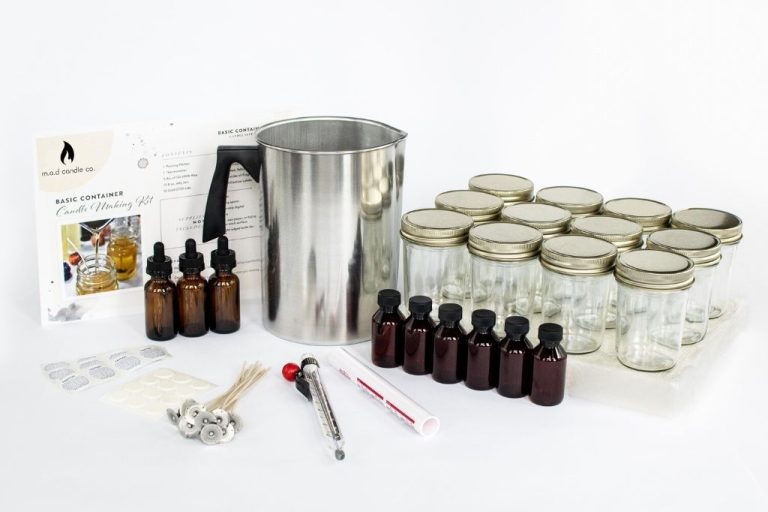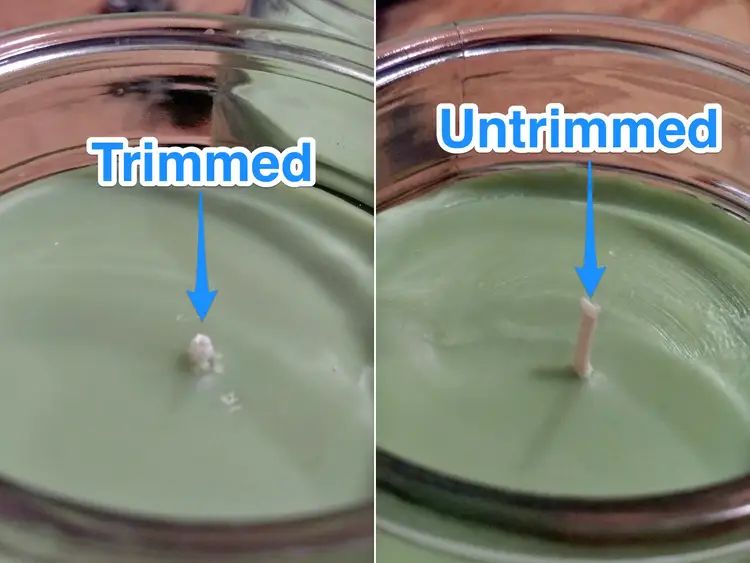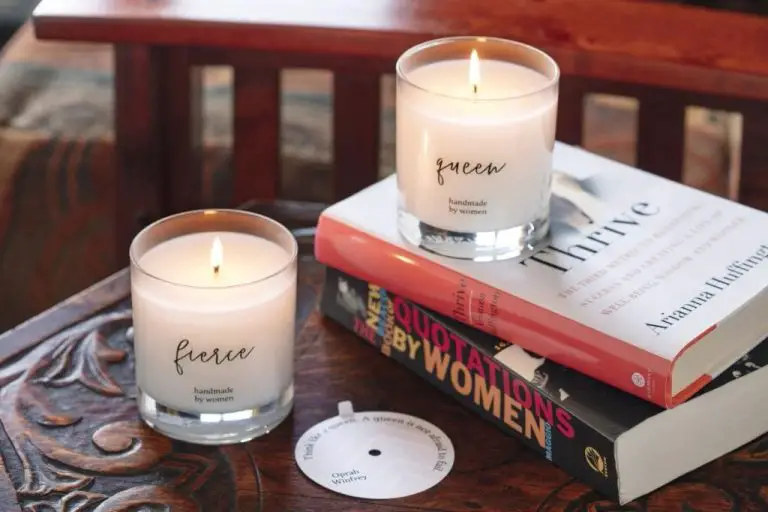Can You Stick Your Finger In Candle Wax?
Candles are a common item found in many households today. They are used to create cozy ambiance, pleasant scents, and a comforting glow. However, despite their widespread use, there are still some lingering questions surrounding candle safety. One such question many people wonder is: can you stick your finger in candle wax without getting burned? On the surface, the idea may seem harmless enough. After all, the wax itself is not on fire. But upon closer inspection, there are definite risks associated with touching hot wax. This article will take an in-depth look at candle wax – its composition, melting point, potential to cause burns, and proper safety tips for handling. We’ll also conduct an experiment sticking a finger in wax to observe the effects. By the end, you’ll have a thorough understanding of whether it’s truly safe to dip a finger into that hot melted wax.
What is Candle Wax Made Of?
Candle wax is made from various ingredients that determine the properties and burning characteristics of the candle. The most common types of wax used in candle making are:
Paraffin Wax – A petroleum-based wax made from purified crude oil. It is odorless, colorless, and burns cleanly with a high melting point. Paraffin is the most commonly used candle wax today (https://candles.org/elements-of-a-candle/wax/).
Beeswax – A natural wax produced by honey bees. It has a sweet, honey-like scent and burns brighter than other waxes. Beeswax is more expensive than paraffin.
Soy Wax – A renewable and biodegradable wax made from soybean oil. It burns slower and cooler than paraffin with a lower melting point. Soy wax is commonly used for container candles.
Other waxes like palm wax, gels, and synthesized waxes are also used in candle making. The ingredients determine the texture, scent throw, melting point, and burn properties of the candle (https://www.baltimoremagazine.com/special/do-you-know-what-ingredients-are-in-your-candles/).
Melting Point of Candle Wax
The melting point of candle wax varies depending on the type of wax used. According to Nikura, beeswax has a high melting point of 62-65°C (144-149°F), which makes it suitable for candles because it allows them to burn steadily (https://nikura.com/blogs/discover/what-temperature-does-wax-melt). In comparison, paraffin wax, a petroleum-based wax commonly used in candles, has a melting point of 47–65°C (117–149°F) (https://blendedwaxes.com/blog/wax-melting-point-factors/).
The addition of other ingredients can also affect the melting point. As mentioned by Brook Ottaway Creations, adding coconut oil, with its lower melting point of 76°F, helps soften beeswax so it can be used in container candles more easily (https://brookotascreations.com/which-temperature-does-candle-wax-melt-complete-list-of-waxes/).
In summary, different types of candle waxes, as well as added ingredients, lead to a range of melting points. Knowing the melting behavior of a candle’s wax helps predict how it will perform when burning.
Can Candle Wax Cause Burns?
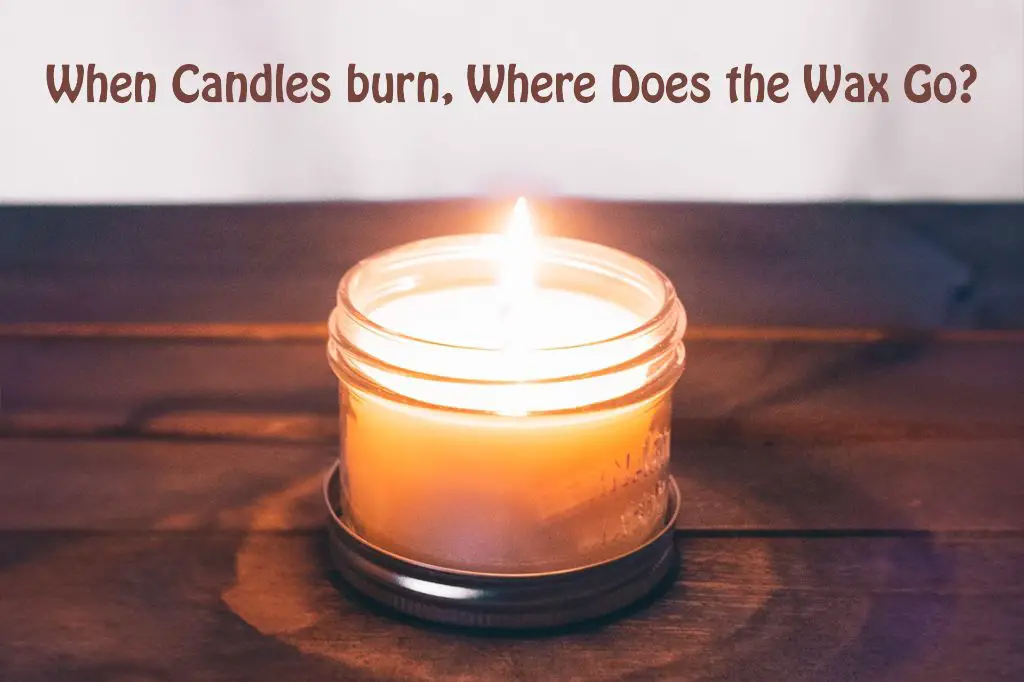
Candle wax can cause burns if it is heated to a high enough temperature. The melting point of paraffin wax, which is commonly used in candles, is around 120-170°F. Once heated to this temperature, dripping or spilled wax can cause burns if it comes in contact with skin (Go Ask Alice!). However, lower temperature waxes like soy or beeswax generally have melting points under 125°F and are less likely to cause burns. According to experts, anything under 125°F is unlikely to cause serious burns if briefly in contact with skin.
Studies show that brief contact with wax around 125°F may cause slight redness but is unlikely to blister or scar. However, prolonged contact with hot wax or wax heated above 150°F can cause more severe burns requiring medical treatment. The risks go up the hotter the wax temperature. Things like adding fragrance and other chemicals to candle wax can also lower its melting point and increase burn risks (Go Ask Alice!).
To minimize risks, use candles made from natural waxes with lower melting points, keep them away from drafts to reduce hot wax splattering, and carefully extinguish if unattended. Teach children safe handling and avoid risky play like dripping wax on one another. With safety precautions, brief contact with wax below 125°F should not cause injury.
Safe Handling Tips
When handling candle wax, it is important to practice caution and patience to avoid potential burns. Here are some tips for safely handling candle wax:
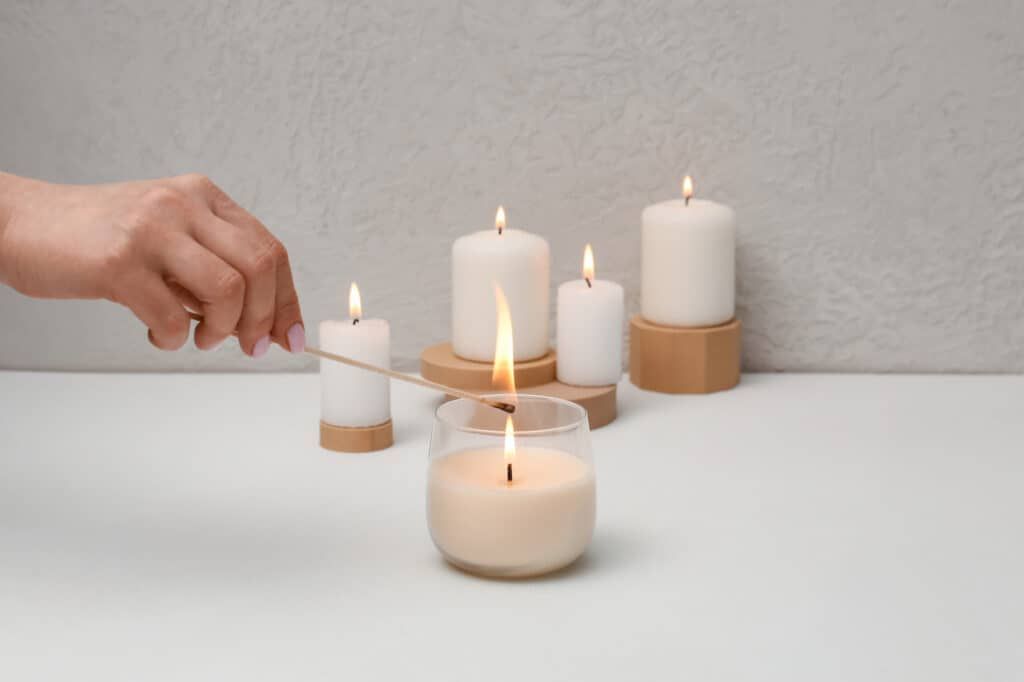
First, always allow the candle wax to fully cool and harden before attempting to touch or handle it. Test the temperature by hovering your hand over the top, but do not make contact until you are sure it has cooled. Candle wax can remain hot for a while after blowing out the flame, so it is best to wait at least an hour before handling.
Never leave a burning candle unattended. Always keep a watchful eye and extinguish the flame before leaving a room. Supervise children and pets around lit candles to prevent accidental tip overs and injuries.
Use candle holders that are sturdy and won’t tip over easily. Place burning candles on a stable, heat-resistant surface away from combustible materials like curtains or paper.
Finally, it’s best to avoid sticking fingers directly into melted wax in general. If you need to re-shape hardened wax, allow it to fully cool first and use caution when handling to avoid burns.
Experimenting with Candle Wax
While playing with wax may seem tempting and fun for kids, it’s important to teach them how to interact with it safely. According to Well and Good, wax play should always be done carefully, as wax can burn at temperatures between 130°F and 180°F. However, there are some safe ways kids can engage with candle wax under adult supervision.

The first rule is to always blow out the candle before touching the wax, as an open flame poses a serious burn risk. Once the wick is no longer lit, an adult can pour small amounts of wax into a heat-safe container or tray. As recommended by Sexual Health Alliance, kids should always test the temperature before touching any wax by sprinkling a drop on their wrist or inner elbow. If it feels uncomfortably hot, they should wait several minutes for it to cool more.
With cooled wax, kids can experiment with techniques like making small wax sculptures or imprints of objects. Supervision is critical, and wax play should be limited to only a minute or two at a time. Any hardened wax on the skin should be peeled off gently—never pulled. As Mashable notes, kids should be taught to point hardened wax away from themselves if peeling. Basic safety gear like gloves and goggles can add an extra layer of protection. With an adult overseeing the process and temperature, wax play can be an engaging sensory activity for children.
If candle wax hardens on your skin, it can be difficult to remove. The wax adheres tightly to the skin and peels off painfully if you try to pull it off. Attempting to scratch off dried wax can also damage and irritate the skin.
Instead of trying to peel or scratch off hardened wax, the safest and most effective method is to re-melt it. The warmth from the re-melting process loosens the wax’s grip on your skin for easy removal. Here are some techniques for melting and removing hardened candle wax from skin:
- Apply a generous amount of baby oil, mineral oil, olive oil or coconut oil over the wax. Massage the oil into the skin to heat and dissolve the wax. The wax will ball up and begin to rub off.
- Hold a cotton pad soaked in rubbing alcohol on the wax for 30-60 seconds. This helps melt the wax so you can gently rub it away.
- Saturate the wax with petroleum jelly. Cover thickly with petroleum jelly, then let it sit for a few minutes. The wax will come off much more easily when wiped away with a soft cloth.
- Use a hair dryer to gently warm and loosen wax before wiping away with an oil.
It’s crucial not to pull or scratch at the wax. With some oil and warming, even dried wax can be gently lifted off skin without pain or damage.
When to Seek Medical Care
In most cases, minor candle wax burns can be treated safely at home. However, you should seek medical care for severe burns that:
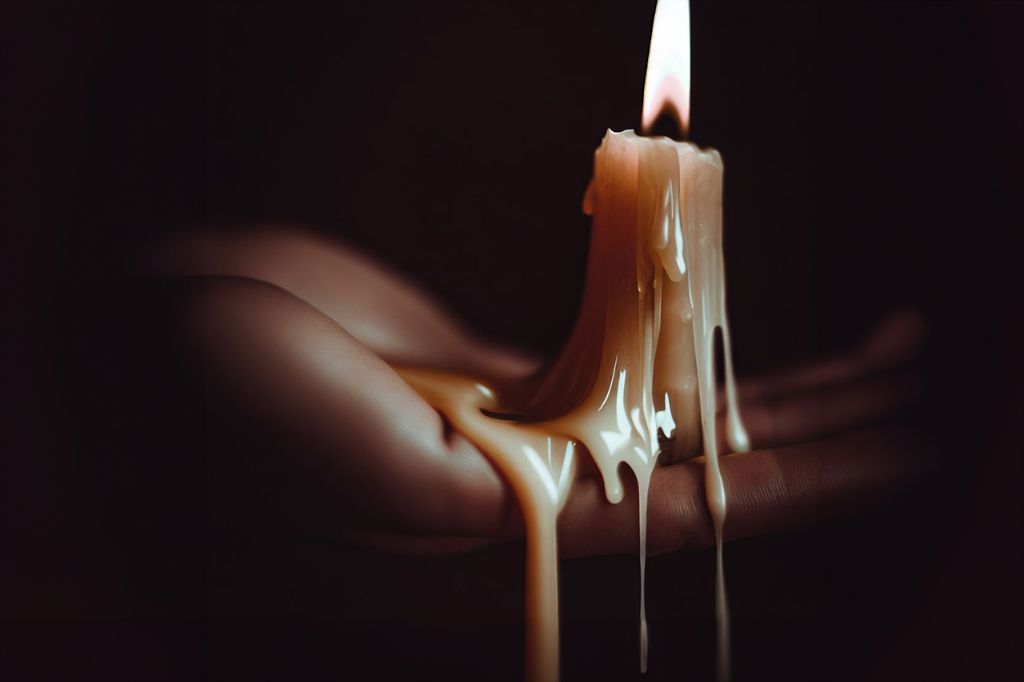
- Cover a large surface area of the skin
- Affect sensitive areas like the face, hands, or genitals
- Cause significant blistering or deep tissue damage
- Do not show signs of healing within a few days
According to the burn care specialists at University of Rochester Medical Center, deep second-degree and third-degree wax burns require emergency medical care to prevent infections, fluid loss, and permanent scarring. Third-degree burns in particular destroy both the outer and inner layers of skin, so they must be treated immediately to avoid complications.
For severe wax burns, call 911 or visit an emergency room right away. Healthcare providers can assess the extent of damage, provide pain management, thoroughly clean and dress the wound, and determine if skin grafting is required for proper healing.
Teaching Fire Safety
It’s important to teach children proper fire safety when using candles, including safe handling and what to do if their skin comes into contact with melted wax. Supervision is key – children should never be left unattended with burning candles.Children should be taught candle safety rules, such as keeping candles away from flammable objects, not touching the hot wax, blowing candles out before leaving a room, and alerting an adult if a candle fire occurs.
If allowing candle play, precautions must be taken. Use battery-operated candles rather than real candles. Work on a nonflammable surface away from anything flammable. Provide heat protection like oven mitts. Closely monitor the activity and have a bucket of water on hand. Explain that hot wax can burn skin. Teach children to alert an adult if wax drips on their skin.
With proper precautions and adult supervision, some candle play can safely teach children about fire hazards. Open communication and modeling safe practices are key to raising fire-conscious kids.
Conclusion
Candle wax can be fun to play with, but it’s important to handle it safely. While cooling wax generally won’t cause burns, sticking your finger directly into melted wax can be very dangerous. The high temperatures can lead to painful burns, blisters, or even more severe injuries. It’s best to let adults handle pouring hot wax and supervise any experiments. With some simple safety precautions, candle play can spark creativity and satisfy curiosity in a careful way.
In summary, exercise caution around candle wax, especially in its melted state. Consider trying kid-friendly soy or beeswax candles, which have lower melting points. Focus play on hardened wax, and always have an adult involved when melted wax is present. Approach candle experiments as educational opportunities to teach fire safety. With some thoughtful guidelines, candle play can be an engaging sensory experience.
Candles remain popular for a reason – they can be calming, create warm ambiance, and look beautiful. With proper handling, they can also be a safe way for children to explore properties of wax and fire. Just be sure respect the potential dangers of a burning flame. By teaching fire safety and setting ground rules, the whole family can safely enjoy the timeless magic of a glowing candle.


